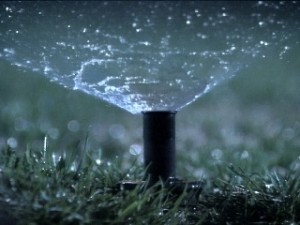Water Conservation
Water conservation through efficient landscape management will help preserve our water resources.
Water conservation through efficient landscape management will help preserve our water resources.
Over 70% of the Earth’s surface is covered by water, though while this precious natural resource seems abundant only 2.5% of all water is fresh water, the rest is salt water. If we breakdown this statistic even further, nearly 70% of that freshwater is frozen in the polar icecaps, or deep in inaccessible underground aquifers. Finally this leaves humans with less than 1% of the Earth’s freshwater available for consumption, equating to 0.007% of all water on earth. Now that you know these statistics you can see how water conservation is important to everyone and here we will discuss 6 tips on watering your landscaping efficiently.
 Recent studies indicate that for most American households, up to 50% of their water usage is for outdoor watering of lawns and gardens. Watering efficiently will help you conserve water and save money, it also creates a healthier landscaping since over watering can promote fungus growth and other diseases. It is important to remember that over watering can also create wastewater runoff, which will contribute to the polluting of our freshwater resources. The most efficient way to conserve water in relation to landscaping is to design a yard that is self sustainable, mainly on rainfall after the plants are established. This principle of water conservation is known as xeriscaping, which simply means landscaping or gardening in ways that eliminate the need to supplement water from irrigation system. If your yard is not designed in such ways, implementing the following efficient watering tips can save water, money and help you have a beautiful yard at the same time.
Recent studies indicate that for most American households, up to 50% of their water usage is for outdoor watering of lawns and gardens. Watering efficiently will help you conserve water and save money, it also creates a healthier landscaping since over watering can promote fungus growth and other diseases. It is important to remember that over watering can also create wastewater runoff, which will contribute to the polluting of our freshwater resources. The most efficient way to conserve water in relation to landscaping is to design a yard that is self sustainable, mainly on rainfall after the plants are established. This principle of water conservation is known as xeriscaping, which simply means landscaping or gardening in ways that eliminate the need to supplement water from irrigation system. If your yard is not designed in such ways, implementing the following efficient watering tips can save water, money and help you have a beautiful yard at the same time.
With less than 1% of all freshwater available for human consumption, watering your landscaping efficiently is a must, especially when living a sustainable lifestyle. These practices help reduce the cost and need for developing new water supplies, leaving more water in the reservoirs and rivers for wildlife and recreation.